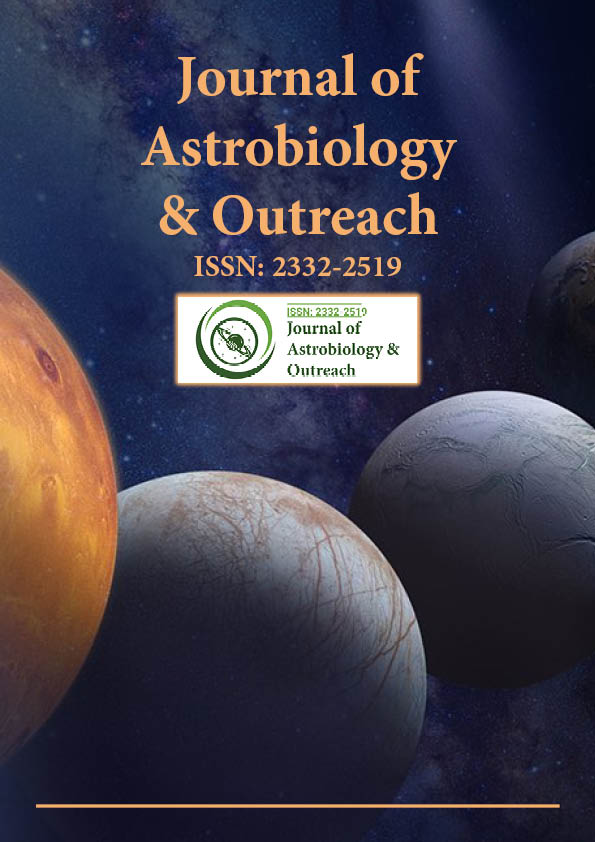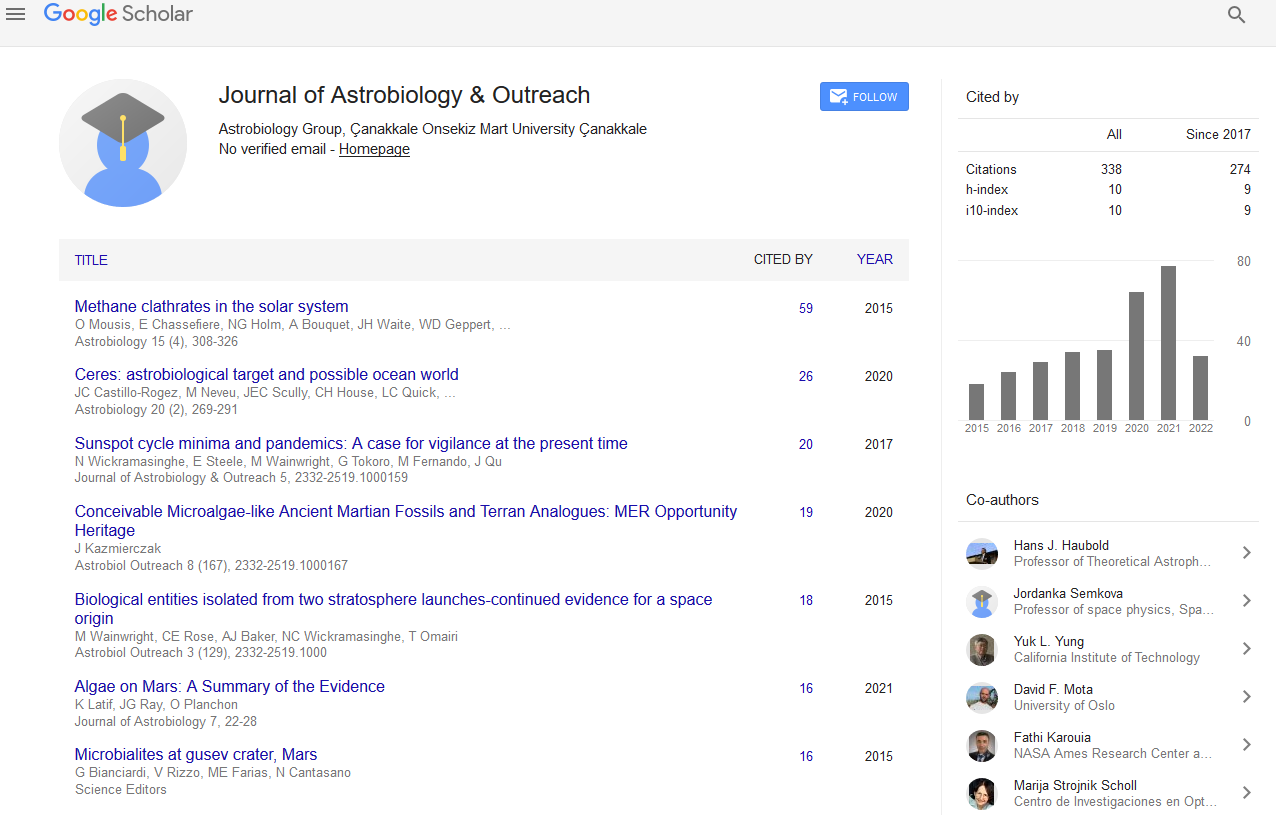Indexed In
- Open J Gate
- Academic Keys
- JournalTOCs
- RefSeek
- Hamdard University
- EBSCO A-Z
- OCLC- WorldCat
- Google Scholar
Useful Links
Share This Page
Journal Flyer

Open Access Journals
- Agri and Aquaculture
- Biochemistry
- Bioinformatics & Systems Biology
- Business & Management
- Chemistry
- Clinical Sciences
- Engineering
- Food & Nutrition
- General Science
- Genetics & Molecular Biology
- Immunology & Microbiology
- Medical Sciences
- Neuroscience & Psychology
- Nursing & Health Care
- Pharmaceutical Sciences
Commentary - (2025) Volume 13, Issue 2
Microbial Diversity: Extremophiles and the Industrial Revolution
Kenneth Anna*Received: 16-Dec-2023, Manuscript No. JAO-23-24461; Editor assigned: 19-Dec-2023, Pre QC No. JAO-23-24461; Reviewed: 02-Jan-2025, QC No. JAO-23-24461; Revised: 22-Jan-2025, Manuscript No. JAO-23-24461; Published: 29-Jan-2025, DOI: 10.35248/2332-2519.25.13.376
Description
Extremophiles can be broadly categorized into various types based on the extreme conditions in which they thrive. Psychrophilic are adapted to cold environments, thriving in temperatures below the freezing point. Thermophiles, on the other hand, flourish in hightemperature environments such as hydrothermal vents and geysers. Acidophilus thrive in highly acidic conditions, while alkaliphiles prefer alkaline environments. Halophiles have adapted to high salinity, with some even flourishing in salt concentrations exceeding that of seawater. The study of extremophiles has profound implications for scientific research and applications. Enzymes produced by extremophiles, known as extremozymes, have unique properties that make them valuable in industrial processes. From the depths of the ocean to the boiling temperatures of deserts, extremophiles have been discovered in diverse ecosystems, offering invaluable insights into the adaptability and tenacity of life itself. Extremophiles, as the name suggests, succeed in extreme conditions that were traditionally considered hostile to life.
These conditions include extremes in temperature, pressure, acidity, salinity, and radiation. Rather than being anomalies, extremophiles are now recognized as a diverse and widespread group of organisms with the ability to colonize and flourish in environments that were once thought uninhabitable. Thermophilic enzymes are used in the manufacturing of laundry detergents, where they remain active at high temperatures. Extremophiles are also of interest in the field of astrobiology, as their ability to survive in extreme conditions has implications for the search for extraterrestrial life on other planets or moons. The unique biochemical adaptations of extremophiles have made them a goldmine for biotechnological applications. The extremozymes produced by these microorganisms have proven to be robust catalysts that can withstand harsh industrial conditions.
Industries such as food processing, pharmaceuticals, and biofuel production have benefited from the discovery and utilization of extremophiles and their enzymes. The stability and efficiency of extremozymes have contributed to advancements in sustainable and environmentally friendly industrial processes.
Extremophiles found in these depths have adapted to survive in conditions that would crush most organisms. Some deep-sea extremophiles, such as certain types of bacteria, have been discovered around hydrothermal vents, where they harness the energy of chemical reactions to sustain life in the absence of sunlight. Volcanic environments, with their intense heat, gases, and mineral-rich soils, host extremophiles that have evolved to withstand the extreme conditions. Microorganisms such as thermophilic bacteria have been found thriving in the vicinity of active volcanoes, utilizing the heat and minerals released during volcanic activity. The study of these extremophiles provides insights into the origin of life and the potential for life on other planets with volcanic activity.
Extremophiles have become significant players in the search for extraterrestrial life. The discovery of life in extreme environments on Earth has expanded the possibilities of habitable zones on other celestial bodies. Scientists are particularly interested in the potential for life on Mars, where extremophiles could exist in subsurface environments or ancient hydrothermal systems. Extremophiles offer a framework for understanding the limits of life and the potential for microbial life beyond our planet. From the deepest ocean trenches to the highest volcanic peaks, extremophiles continue to captivate scientists with their ability to thrive in extreme conditions. As research progresses, the applications of extremophiles in biotechnology and their significance in astrobiology are likely to expand, unraveling more mysteries about the potential for life beyond Earth.
Citation: Anna K (2025) Microbial Diversity: Extremophiles and the Industrial Revolution. J Astrobiol Outreach. 13:376.
Copyright: © 2025 Anna K. This is an open-access article distributed under the terms of the Creative Commons Attribution License, which permits unrestricted use, distribution, and reproduction in any medium, provided the original author and source are credited.

